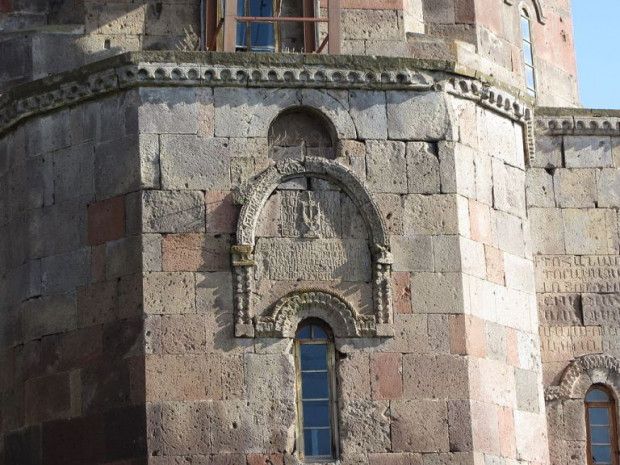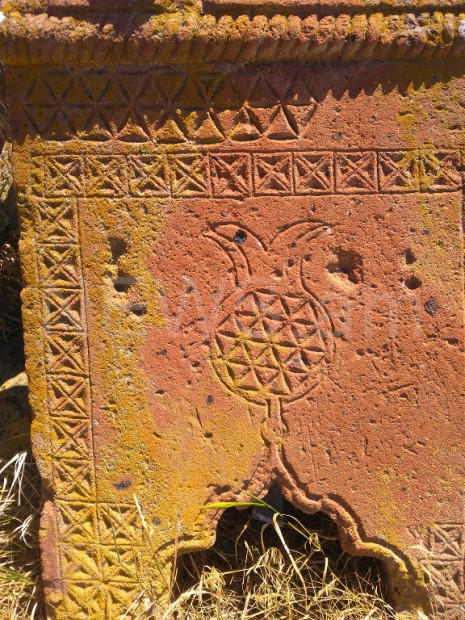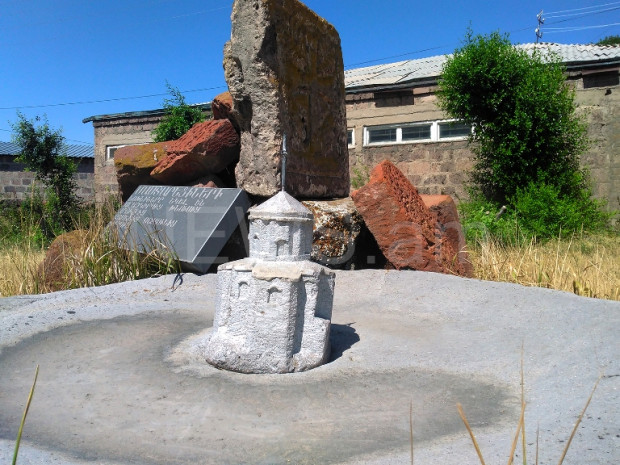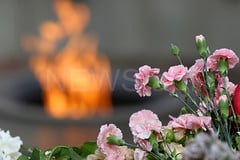I followed the steps of my family, says architect Ara Zaryan, who is the son of architect Armen Zaryan and grandson of renowned Armenian writer Gostan Zaryan.
The history of the three generations of this family has invariably been linked with two countries—Armenia and Italy. Gostan Zaryan taught his native Armenian language at Mkhitaryan Congregation in Venice. His sons studied at Murad Rafaelian college. In 1991, Ara Zaryan came to Venice from Armenia to work in the Center for Study and Documentation of Armenian Culture established by his father and uncle. But since 2011, he has been visiting Armenia every year along with fresco restorer Christine Lamugue. These two people, who are in love with their work, look for fresco traces in medieval Armenian churches during their vacation and restore them at their own expense.
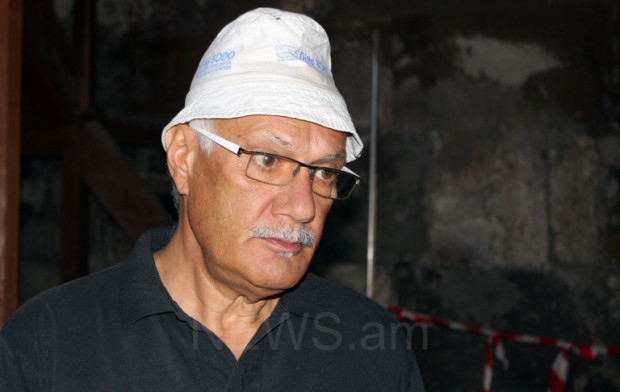
''The culture of Armenia is unique in its kind. The history and culture of Armenian frescoes is studied very little. I was lucky to know Ara, since my Armenian starts and finishes with the phrases ''Barev dzez'' (Hello) and ''Tstesutyun'' (Bye). We have a common passion for frescoes. The Armenian frescoes are a complete discover for me as a specialist. I decided to dedicate my vacation to Armenian frescoes and I am not sorry about that. The main conclusion which we have arrived at is that frescoes were a traditional and standard phenomenon in the Armenian churches of 7th and 8th centuries,'' Christine Lamugue says.

This has already been her eleventh visit to Armenia. Frescoes in Dadivank, Lmbatavank and Vorotnavank have all been restored. This year Ara Zaryan and Christine Lamugue worked in Karmravor church in Ashtarak town, as well as in Surb Hovhannes (St. John) church in Mastara village.
Ara and Christine visited Surb Hovhannes for the first time this year. They saw that the walls were plastered here, and consequently there might be a fresco on them. They cleaned the wall in several parts and came across an image of a hand holding a horse harness. According to Ara Zaryan, they turned to the Armenian Ministry of Culture to get a permission for studying the church and began doing that after receiving it.
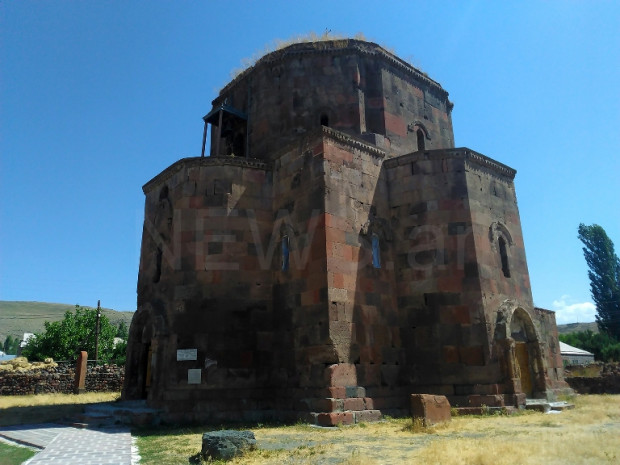
The church was established in the 5th century. In the late 6th and early 7th centuries it got the appearance, which it has today. ''This is one of the wonders of the Armenian architecture. The dome of the church is in the center, while its sphere dome turns into a cube of lower premise thanks to four trumpet vaults. This is such a dimensional solution that inside you wonder how great the church is, whereas form outside it is a very compact building, as if graved from one piece of stone,'' Zaryan says.
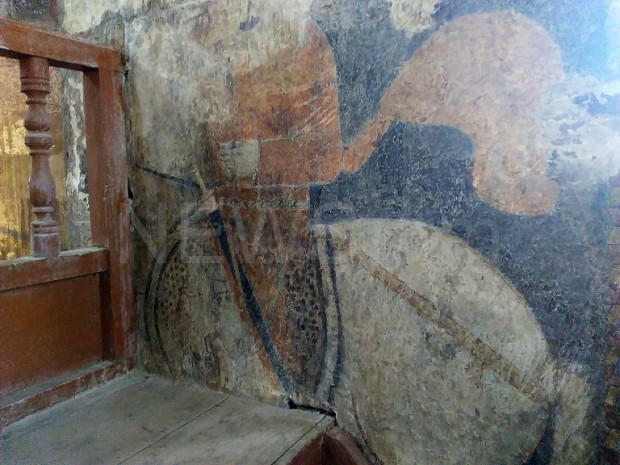
The hand with harness proved to be a fragment of an image of a saint riding a horse. Allegedly saint, since his head with the halo hasn't been preserved, Zaryan adds. ''But we know [other] holy knights—Sargis, Gevorg,'' he noted. Two figures and an inscription can be seen to the right of the knight.
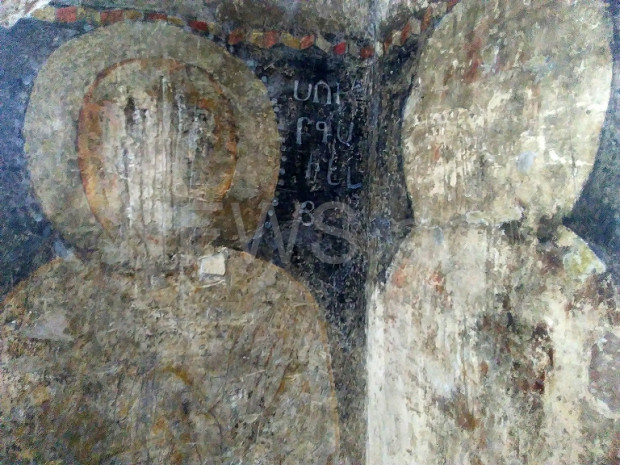
Part of the letters has been worn away. It was supposedly written 'Archangel Gabriel' here. ''He has no wings, since the lower part of the plaster has completely dropped, that is we cannot confidently claim that this is Gabriel, but we can suppose,'' Zaryan says.
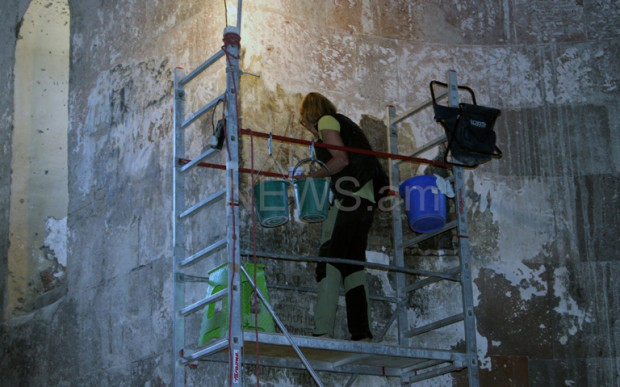
In the place where Christine Lamugue is working now, one can see two figures—one is barefoot, while the other wears shoes: this is perhaps a high-ranking church dignitary.
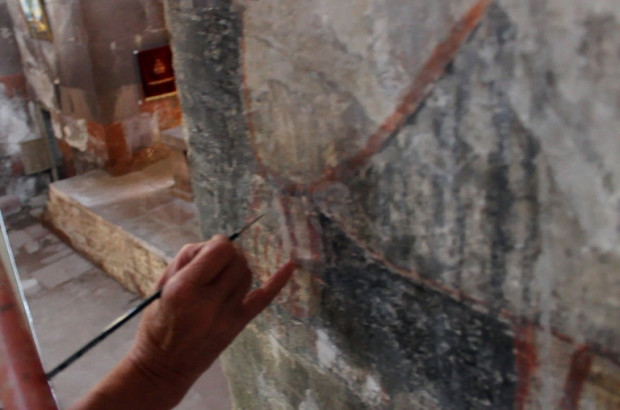
In Zaryan's words, the church is in quite a dire state. It used to be a storage in the Soviet period: corns were stored here. The walls of the church were covered with new layer of plaster then for the storage not to be humid. After the collapse of the Soviet Union, people decided to restore the old appearance of the church and scratched off the Soviet plaster with whatever they could, spoiling the layers and frescoes under it. Apart from this, it can be seen that the faces of the saints are intentionally scratched on the frescoes. This was done before the Soviet plaster but it is hard to establish the period and purpose of this act.
Currently, the arches under the dome are painted in blue. According to Zaryan, this color has nothing to do with the Christian Armenian culture.

The church could have been restored that way in the period of the conquest of the Caucasus by the Russian Empire in the 1800s, when tsar's deputy arrived here. ''This is my hypothesis. This kind of blue color is characteristic of the Russian Orthodox Church. A sample of the paint can be taken to understand more precisely what period it belongs to,” Zaryan says. In fact, they have already taken samples from frescoes for research in Italy.
The choir stalls are the heritage of another Christian culture—the Catholic one. They were most likely constructed by Francs—Armenian-Catholics, whose main spiritual center was the city of Gyumri located not far from Mastara.
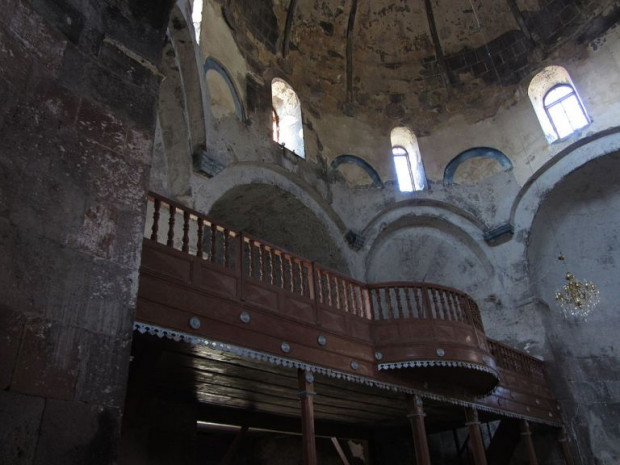
Zaryan assures that all the walls of Surb Hovhannes church were initially covered with frescoes, Christine's and his research proving this. ''These were not separate paintings but ones with plot and thematic image on the entire surface. Unfortunately, there are neither written testimonies nor any illustrations regarding this. But our research allows making such a conclusion,'' he says.
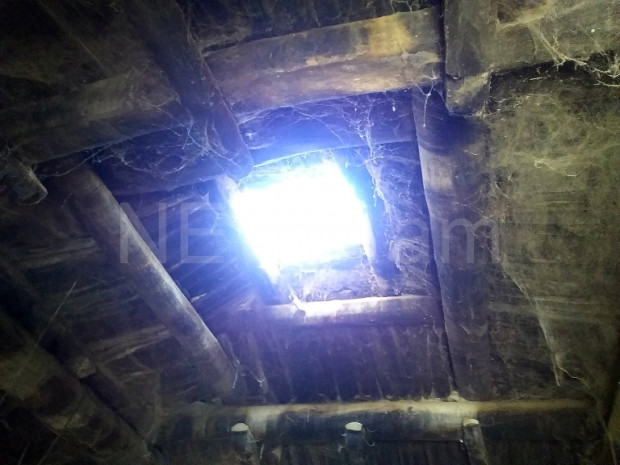
Next to the church Ara Zaryan shows us a premise with a roof constructed by Armenian hazarashen technique. This ancient wooden building now serves as a barn for one of the local residents. The logs of the roof are covered with a cobweb, while a pole moved out of its location is supported by a pot lid.

Whereas hazarashen is such a rare ethnographic phenomenon in Armenia now...
